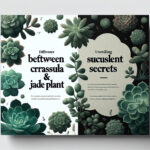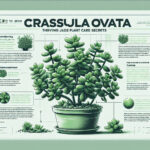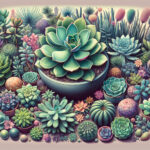Introduction to Crassula: The Succulent Enigma
Welcome, fellow plant enthusiasts, to a botanical journey into the world of Crassula, a genus that’s as enigmatic as it is delightful. You might be familiar with the classic jade plant, a household name that virtually everyone recognizes. But what many don’t realize is that this plump-leaved beauty is part of a much larger and intriguing family known as Crassula. Diving into the classification of this alluring flora, we uncover a world where thick, fleshy leaves speak volumes about survival, evolution, and garden charisma.
Succulents, with their remarkable water-storing abilities, have captured hearts all over the globe. The fabled Crassula, however, stands out within this group. It prompts us to ponder—what exactly makes a succulent a succulent? Is it merely the ability to hoard water in arid climates, or is there more to the story? Indeed, Crassula’s secret lies not only in its luxuriant leaves but also in its unparalleled adaptability. From the windswept steppes of South Africa to the cosy confines of our living rooms, Crassula plants embody resilience and beauty in a single breath.
Consider the charming Crassula ovata, or as you might know it, the money plant. Its chubby leaves are a vibrant testament to its succulent status, yet they only brush the surface of the genus’s diversity. Meandering through gardens, one might chance upon the whimsical Crassula umbella, whimsically shaped like an umbrella yearning for a rainy day—another quirk in the family tree that makes us marvel at Mother Nature’s creativity.
To truly understand how to nurture these living gems, you don’t need just a green thumb, but also a touch of curiosity. Beneath their lush foliage lies a roadmap for caring for them, a topic to which we’ve devoted an entire guide, unraveling the mystery of growth in the face of challenges. It’s a narrative of thriving where others merely survive, a hallmark of the daring and dauntless Crassula.
But let’s pause for a visual treat—watch this and be inspired by the resplendent world of Crassula:
The conundrum of Crassula‘s succulence is not just academic—it’s a call to action for gardeners and indoor plant lovers alike. How we interpret this classification shapes how we grow, cherish, and propagate these succulent wonders. So let’s delve in, nurture these plants with insight, and in doing so, cultivate a deeper connection with the green world around us.
Defining the Succulent: How Crassula Fits In
Succulents have become the darlings of the plant world, but what exactly makes a plant a succulent? It’s all about water, or rather, a plant’s ingenious adaptations to conserve it. Succulents are the camels of the flora kingdom, equipped to store water in their leaves, stems, or roots, and sip on these reserves to survive the driest of conditions. Now, enter Crassula, a genus that not only fits the bill but does so with an elegance that captures the hearts of gardeners and plant enthusiasts alike.
Picture this: plump, glossy leaves often stacked like a string of emeralds on a dainty necklace. These fleshy leaves are the storage units of the Crassula plant, hoarding water for the proverbial rainy day. But it’s not just about survival—this succulent trait gives them an edge in arid environments where other plants might just throw in the towel. And for the gardener with a forgetful watering schedule, these resilient beauties are forgiving, symbolizing endurance and adaptability.
But let’s dive a little deeper. The Crassula genus is vast, boasting an impressive range of species with varying shapes, sizes, and textures. Whether it’s the beloved jade plant, Crassula ovata, or its quirkier cousins, the species within this genus exhibit characteristics quintessential to succulents. They’re not only adept at retaining water but are also masters of the sun, using their waxy, sometimes hairy leaves to reflect harsh sunlight and shield their precious water stores.
In the real world, you’ll find Crassula dotting rocky landscapes, peeking through gritty soils, and even defying gravity on cliff faces. Their ability to thrive with minimal care makes them an ideal choice for both terrariums and outdoor xeriscapes, embodying the essence of nature’s ingenuity. Every Crassula plant carries with it an inspiring story of evolution, resilience, and the delicate balance of life in challenging environments.
In essence, Crassula doesn’t just fit in with succulents; it serves as a remarkable example of how these plants have harnessed the simple, yet profound principle of water conservation. It’s a tale of survival and grace, engraved in every leaf and stem, whispering the secrets of the succulent world to those who take the time to listen.
Delving into the Crassula Genus: Diversity and Adaptation
You might have stumbled upon a Crassula in a sun-soaked nursery, or perhaps you’ve admired its stout, vivid leaves from the pages of a magazine, arresting your attention with its verdant charm. But there’s far more to these fleshy delights than what meets the eye. Within the Crassula genus—a tapestry of biodiversity—lies a cornucopia of species that are both robust and beautifully adapted to a smorgasbord of environments, offering us a glimpse into their succulent soul.
Take the scenic journey beyond their alluring aesthetic and you’ll discover Crassula’s secret to survival: adaptability. From the windswept plains of their African homeland to the cozy confines of your living room, their knack for thriving in varied climates showcases the very essence of succulent resilience. Understanding Crassula plant care is akin to unraveling a botanical puzzle where each tactical move—light, water, soil—ensures a healthy, flourishing plant.
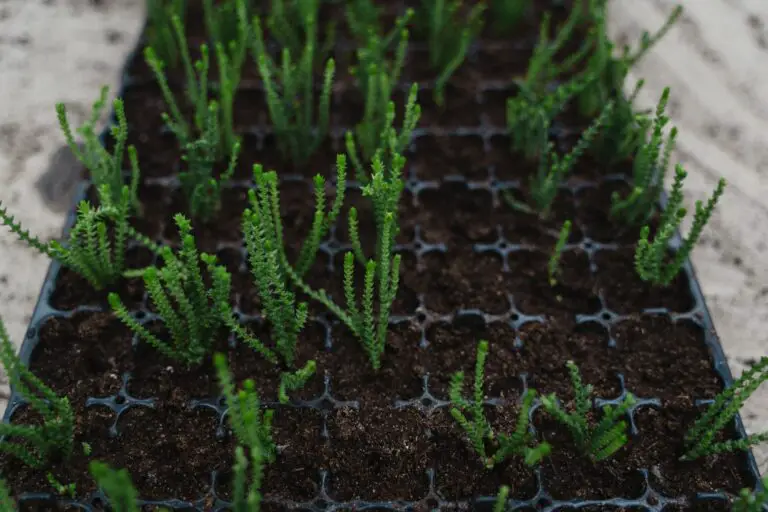
Ponder for a moment the Crassula ovata, commonly hailed as the Jade Plant. Hardy and evergreen, this species proudly wears crowns of glossy leaves, so thick and full they seem to defy gravity. In homes where the dreariness of winter looms, a Jade Plant perches on a windowsill, staunchly unfazed by the seasonal gloom, unfurling greenery like a beacon of eternal spring. And if you’re yearning to witness these wonders firsthand, you’ll find enriching tips on the optimal conditions for their prosperity right on our website’s guide to ensuring succulent vitality.
Yet, it’s not just the popular Crassula ovata that stands testament to the genus’s adaptative prowess. Meander through a botanical garden, and you might encounter the Crassula muscosa, with its intricate lattice of interwoven leaves, a marvel of natural geometry. It’s a silent nod to the fact that under the surface—and within—life surges with variety and an endless capacity for adaptation.
The variations are numerous, and their adaptability astounding, which only fortifies the hypothesis—yes, Crassula is indeed a succulent. A powerhouse of survival, thriving through droughts, embracing the sun’s fierce love, and storing life’s elixir in the vaults of their flesh. They are not just plants; they are the embodiment of endurance, inviting us to delve deeper, learn, and perhaps, adapt a little in our own lives.
Crassula Ovata – The Jade Plant Connection
When we delve into the succulent world, there’s one celebrity that capitvates plant enthusiasts and green-thumbed beginners alike – the Crassula ovata, or as you may know it, the Jade Plant. Picturing this stout, gleaming gem may already evoke visions of prosperity and vitality, a testament to its reputation as a symbol of good luck. But is it, at its heart, a succulent? Absolutely, and the Jade Plant stands as the quintessential specimen showcasing the resilience and allure of Crassula succulents.
Imagine a plant that thrives on neglect, basking in the harshest of sunlight while other plants wither. This is the Jade Plant’s claim to fame. A native to the arid regions of South Africa, it’s forged by nature to store water within its fleshy, vibrant leaves – a classic hallmark of succulents. By doing this, Crassula ovata doesn’t just survive; it flourishes, creating lush canopies of green that can live for decades and, quite astonishingly, even outlive their owners!
Now, think of those moments when you’ve spotted these stout green guardians perched on office desks, or by the window of a sun-soaked kitchen. They are more than just eye-candy; they are nature’s little green tanks, armored against the drought, ready to go for weeks without a quench of water. They exemplify the hardiness and effortless charm that makes succulents the perfect companions for our hectic lives.
Lasting through seasons with minimal care, the Jade Plant serves as a living lesson in endurance and simplicity. It’s the go-to choice for those who yearn for a touch of greenery but may not possess the ‘Midas touch’ for gardening. And as you watch it sprout minute white or pink flowers that seem to beam with pride, you’ll understand why Crassula is the poster child for succulent success.
And so, as we revel in the lush, waxy foliage of the Jade Plant, it’s clear that Crassula’s succulence is more than just a botanical feature; it’s a triumph of adaptation, a symbol of lasting beauty, and an unwritten promise of greenery even in the most urban of jungles.
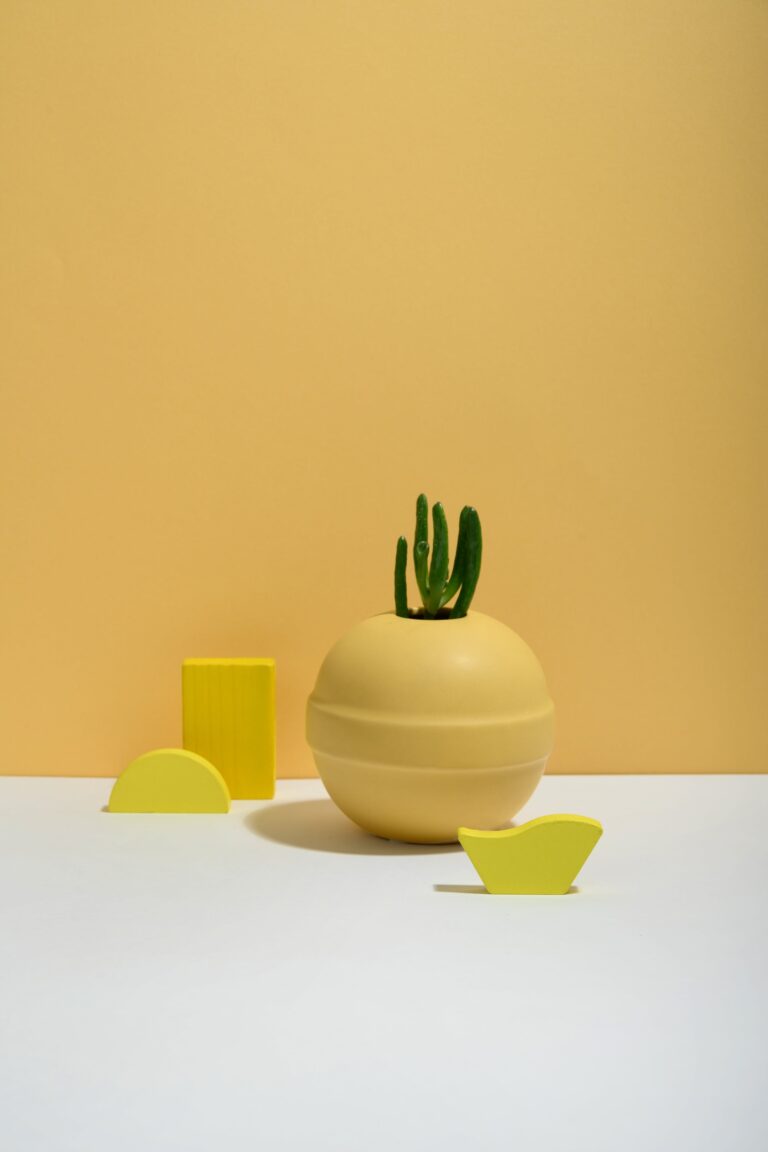
Optimal Care for Crassula Succulents
If you’ve ever admired the stout foliage and unique beauty of Crassula plants, you’ll be delighted to know that these fleshy green gems are indeed succulents. And just like us on a lazy Sunday afternoon, these plump plants love bingeing on sunlight and taking it easy on the hydration. Now, let’s talk about some golden rules for pampering your Crassula and keeping it happier than a cat in a sunbeam.
First off, the soil for your Crassula is the foundation of its wellness. Think of soil like the plant’s mattress – it needs to be supportive, comfortable, and just the right kind of firm. A mix that boasts excellent drainage and breathability is like a luxury memory foam for these succulents. The ideal blend might include coarse sand, pumice, or perlite that ensures moisture isn’t cramping your plant’s roots.
Watering is the next contender in the care ring. It’s all about deep, infrequent watering sessions that mimic the natural soak-and-dry rhythm of desert downpours. Water your Crassula generously, and then let the soil dry completely before the next round. This approach is like interval training but for plants, creating strong, resilient root systems adept at managing drought-like conditions.
Now, let’s chat about sunbathing. Crassula plants love basking in the sunlight, but they’re not the type to roast under the midday sun. Think of these succulents as solar power connoisseurs—they prefer bright, indirect light to keep their energy up without burning out. A sunny windowsill or a spot with filtered light will keep your Crassula grinning like it’s on a permanent vacation.
Real-Life Example: Imagine your Crassula as that friend who dresses perfectly for every occasion. At a vibrant garden soiree, you might notice it shimmering in dappled sunlight, looking radiant without breaking a sweat. That’s your Crassula in its element, flaunting its sun-smart attire with confidence.
Finally, remember that ‘Crassula care’ isn’t just about the basics. It’s a mantra for attending to the smaller details—like gentle whispers of encouragement, an occasional spa day (we’re talking pampering with a good leaf clean-up), and ensuring it never gets chilly (they dislike frost more than we dislike cold emails).
For a deep dive into nurturing your Crassula and turning it into the centerpiece of your indoor oasis, check out this insightful video:
Propagation Tactics for Crassula Enthusiasts
For those with a green thumb intrigued by the resilient and alluring Crassula, propagation can seem like a botanical riddle. But fear not, dear plant whisperers, as the art of multiplying these fleshy wonders is both fulfilling and a testament to their succulent nature. Let’s dig into some real-life examples and turn our thumbs even greener!
Stem Cuts: A Snip in the Right Direction
Take, for instance, the classic stem cut method. Picture this: a robust Crassula ovata, also fondly known as the Jade Plant, sitting on your windowsill. One swift snip of a healthy branch, a short period of callousing, and voilà – a new plant is ready to root and flourish. This is the go-to strategy for many and with good reason. It’s straightforward, efficient, and watching those tiny roots emerge feels like a miniature victory in the grand garden of life.
Leafy Leveraging: Small Pieces, Big Potential
Don’t overlook those fallen leaves that might otherwise be neglected. Each leaf holds the blueprint of potential – a solo voyage to become a full-fledged plant. Gently nudge them into some well-draining soil, and with the light mist of water and patience, you’ll witness a mini Crassula cosmos expanding right before your eyes. Talk about empowerment from a single leaf!
Whether choosing stem or leaf propagation, monitor your burgeoning botanicals for signs of growth, and remember, consistency is key. A stable environment and a nurturing routine will unlock their lush life.
Beloved by enthusiasts for these very propagation qualities, Crassula plants exemplify the wonders of succulent versatility. By mastering these propagation methods, you’re not just growing plants; you’re cultivating an experience, rich with life and the rewarding cycle of growth. Grab those shears, and let’s get propagating!
Common Misconceptions About Crassula and Succulents
When it comes to Crassula plants, a bushel of myths seems to sprout as quickly as their succulent leaves do! So, let’s untangle some of these misconceptions and shine light on the truth, just like you would for these sun-thirsty plants.
First off, many believe that all Crassula plants are built to survive the harshest of deserts. Yes, they are drought-tolerant, but not all are desert dwellers. In fact, some Crassula varieties prefer a more temperate climate, much like other non-succulent houseplants. And as for those fleshy, water-storing leaves and stems, they’re not just for surviving dry spells but also for thriving in various environments.
Another common falsehood is that Crassula plants are maintenance-free. Sure, they can withstand some neglect, but they also appreciate a good pampering session. Just take a look at this , where you’ll learn proper watering, light exposure, and the occasional trim can go a long way.
And let’s talk about water—some think you should water them like cacti, barely ever. Nope! They like their drinks, just not too much or too often. Overwatering is the quickest route to root rot, which even the hardiest Crassula cannot shrug off. Speaking of mistakes, it’s incorrect to assume they need no food. A little nutrient boost during their growing season can really perk them up. Remember, even the sturdiest of warriors appreciates a hearty meal.
Also, there’s this bizarre belief that Crassula can only be green. Not true! They come in a canvas of colors and variegations, adding zing to any plant collection. And while we’re busting myths, why not learn more about these resilient beauties? There’s a wonderful resource full of succulent facts that will keep you engrossed for hours!
So now you know, Crassula and their succulent brethren are not exactly as they’re stereotyped. They’re dynamic, diverse, and yes, a little demanding, but undoubtedly delightful!
Troubleshooting: Dealing with Pests and Ailments
Let’s dive into the heart of the matter – Crassula plants, with their plump and glossy leaves, are a tough lot, right? Tough, yes, but not invincible. Just like Superman has his kryptonite, Crassula has its own pesky nemeses: pests and diseases. It’s about time we rolled up our sleeves and got down to the nitty-gritty of keeping your succulent safe and sound.
Identifying the Culprits: A Detective’s Guide to Pests
If you’ve noticed your Crassula looking a bit under the weather, it’s possible that it’s playing host to some uninvited guests. Aphids, mealybugs, and spider mites are the usual suspects, and they’re as stealthy as they come. Here’s a typical scenario: you wake up one morning to find your Crassula’s leaves coated in a sticky residue. Congratulations, you’ve just encountered aphids in action! These tiny critters feast on the plant sap, leaving a trail of destruction and a vulnerable plant in their wake.
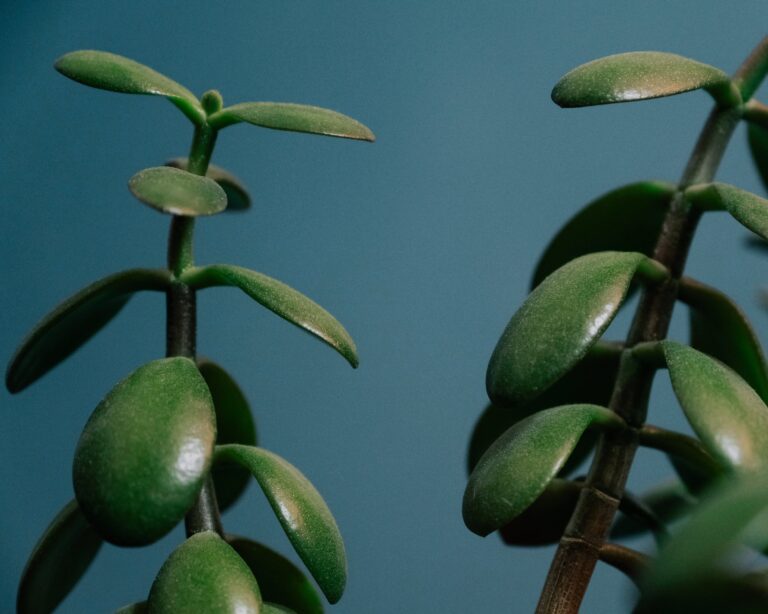
But fear not, identifying these pests is the first step in our battle plan. Aphids are tiny, but you can spot them with their pear-shaped bodies huddled together like they’re plotting their next move. Mealybugs, on the other hand, wear a disguise of white, cotton-like fluff – don’t let their fluffy exterior fool you; they’re up to no good. And spider mites? They’re the ninjas of the insect world, often invisible until their fine webs give away their presence.
Turning the Tables: Effective Treatment Strategies
Now onto turning the tide in this little war. Starting with a simple blast of water might dislodge those pesky pests, literally washing your troubles away. But sometimes, the situation calls for reinforcements. Insecticidal soap or neem oil can be your allies here, launching a strategic strike against the invaders. A tip from the pros: consistency is key. A one-time treatment is rarely a silver bullet, so regular check-ups are essential to defend your Crassula kingdom.
But what if it’s not a bug problem? Let’s talk diseases. Fungal infections thrive in moist conditions, and that’s bad news for your succulent. Think of it this way: just as you wouldn’t wear a raincoat in the Sahara, your Crassula doesn’t need to sit waterlogged. Overwatering is often the root of all evil here, leading to root rot and a host of other issues. Keeping your watering in check and ensuring good drainage will nip most of these problems in the bud.
Adopting a proactive approach is your best defense. Regular inspection of your Crassula, along with proper watering and hygiene practices, is like having a top-notch security system. A plant that’s well-cared-for is like a fortress – less likely to be breached by pests or diseases. So, keep a vigilant eye, and your Crassula will continue to thrive, standing proudly as a testament to its hardy, succulent nature.
Frequently Asked Questions
Are you tangled up in the green world of plants, trying to figure out whether the eye-catching Crassula on your windowsill is a succulent? Well, you’re in the right place! Let’s dig into some of the most common curiosities that plant enthusiasts have about Crassula and its succulent nature.
What Exactly Makes a Plant a ‘Succulent’?
First off, a succulent is like the camel of the plant kingdom! These incredible beings have adapted to survive in arid conditions by storing water in their leaves, stems, or roots. They’re the survivalists of the flora world, hoarding water to thrive in environments where H2O is as precious as treasure.
So, Is Crassula a True Succulent?
Spot on! Crassula plants are the quintessential succulents. Take the popular Crassula ovata, commonly known as the Jade Plant. It flaunts plump, glossy leaves that are reservoirs of water, enabling it to withstand dry conditions with a grin. So, next time you gaze upon this fleshy-leaved wonder, remember – you’re looking at a survival expert!
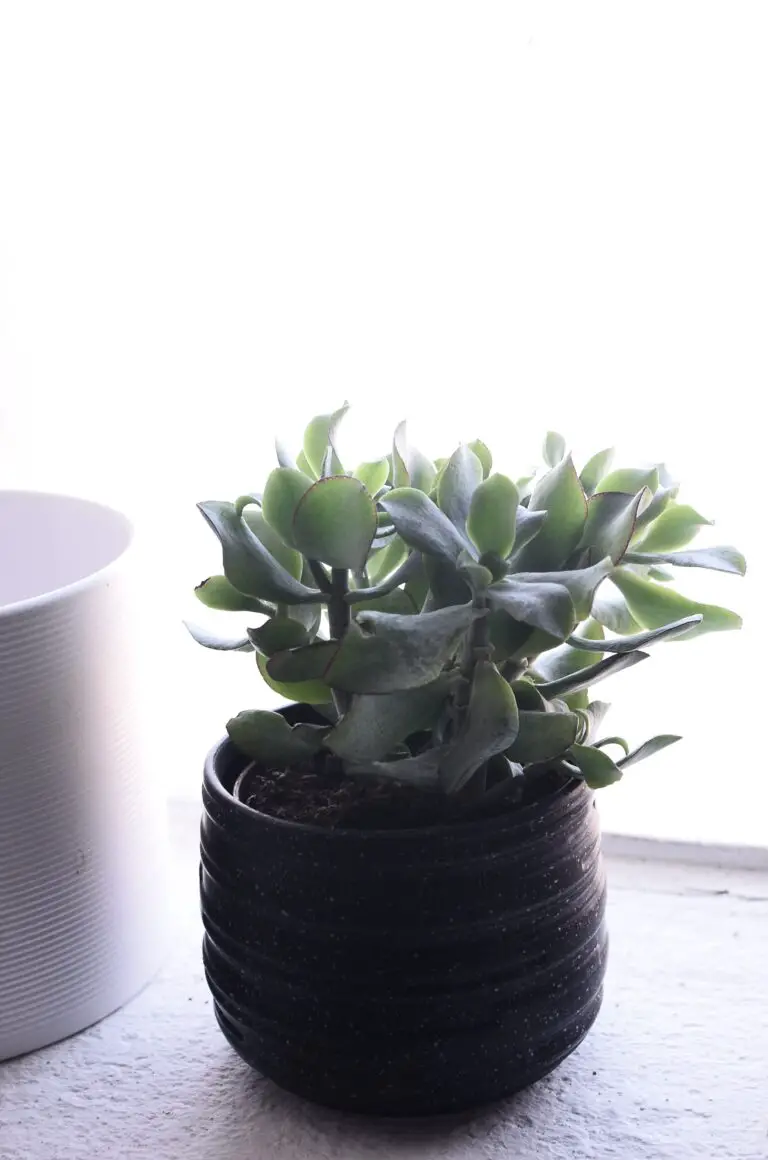
How Can I Tell My Crassula Is Healthy?
Feeling uncertain about the health of your green buddy? Here’s a tip: a happy Crassula boasts sturdy and lush leaves. If they’re looking a little deflated, it might be thirsty for a drink. But, don’t go overboard with the kindness; overwatering is the arch-nemesis of succulents!
Can Crassulas Handle the Great Indoors?
Absolutely! These plants are the perfect comrades for your indoor jungle. With a love for sunlight and a low demand for water, they’re content to bask in the cozy confines of your home. Just toss them a sunbeam, and they’ll reward you with their unwavering leafy presence.
What’s the Deal with ‘Succulent’ Soil?
Oh, it’s all about the drainage! These plants despise soggy feet, so a special succulent mix allows water to flow through swiftly, saying ‘adios’ to excess moisture. It’s like giving your Crassulas VIP shoes that let them dance in the rain without a care in the world.
There you have it, fellow green-thumbed friends — a peek into the succulent life of Crassula. Now, go forth and confidently care for these fleshy, drought-defying marvels!
